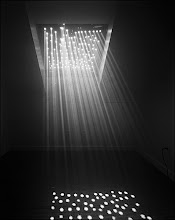Despite the opening shots of this 2005 movie, which follow young mother Sonja (Deborah Francois) and her very vocal new-born baby around the city, it is as the story unravels that you begin to realise that it is, in fact, Sonja's 19 year-old boyfriend, Bruno (Jeremie Renier) that is the child of the film's title.
Bruno, unemployed and exiled from a caring family life, refuses to work, instead choosing the 'easy' way to survive - wheeling and dealing in petty crime, feeding off the misfortune of others. It is not until one criminal act puts him in a direct position of responsibility for the safety of his very young accomplice that Bruno is forced to behave like not only an adult, but also as a responsible father-figure.
Whilst this 'coming of age' plot may, on the surface, sound like a fairly rudimentary genre-piece, what propels it to a masterpiece is the way the directors (Jean-Pierre and Luc Dardenne) went about 'painting' the film's exterior with layers of depth and subtle poignancy.
The colour pallete they chose for the look of the film is mostly muted and neutral, but is strikingly contrasted with brush-strokes of dense primary colours (green, red, yellow, blue) - resulting in a consistent, yet wonderfully subtle, reminder of a child's nursery, or kindergarten.
The hand-held camera work is so careful not to intrude (despite constantly being on a leash with the characters) that it simply blends into it's environment: you almost forget you're watching a staged performance.
The soundtrack, apart from one short scene in the car with a radio playing, is completely void of music, instead just picking up the aural ambiance of inner-city life.
All these exterior choices add to the authenticity of the film, and really just allow the focus to rest with the superb screenplay and acting performances. This is a definite sign of self-assured, mature, and masterful direction.
In the closing scene of the movie, vibrant colours are etched onto the walls and onto Sonja's clothing, yet Bruno is stripped of this playfulness, instead being dressed in a stark grey/white uniform. This is a brilliant use of metaphor to show Bruno's transition from an immature child into a blank canvas from which to transform into adulthood. The couple's emotional embrace - mirroring, yet directly contrasting, the opening scenes carefree, youthful embrace - reflects their understanding of the difficult task it is to be responsible parents. They are scared, but they are not alone.
As critic Margaret Pomeranz sighed; L'enfants is an "exquisite film", and one of a very very subtle and understated brilliance.
L'enfants (The Child) was released in 2005, and is now available on DVD
Subscribe to:
Post Comments (Atom)

No comments:
Post a Comment